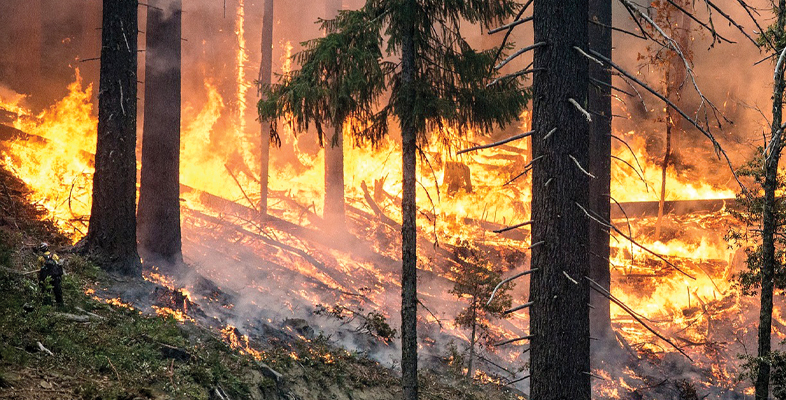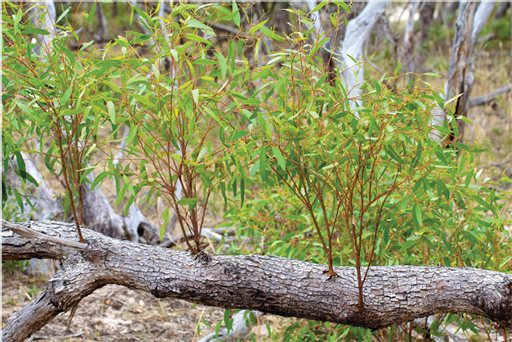2.2 Sprouting from insulated buds
Buds may be protected beneath bark, by moist, densely packed leaf bases in aerial organs (as in some palms), by dense tussocks at ground level, or on underground organs such as tubers and rhizomes (soil being an effective insulator against heat).
Regrowth from these protected buds is the key mechanism by which many fire-resistant plants recover. Trees such as Q. suber and some Australian eucalyptus sprout rapidly after fire because dormant buds on the stem, protected by bark, are stimulated to grow by loss of foliage; this is called epicormic sprouting (Figure 6).
Resprouting from the stem is an advantage in ecosystems with frequent crown fires because it enables quick regeneration of vegetative and reproductive structures.
Many shrubs sprout from buds on roots or at the stem base and some have lignotubers – large woody swellings which hold a mass of buds (Figure 7). They are found on many trees in dry tropical savannahs that are prone to frequent ground fires. A number of South African plants of the genus Protea, that occur mainly in the Cape, resprout from lignotubers.

Growing points can be protected by plant parts other than bark. For example, some cycads (primitive distant relatives of conifers) and grass trees (Xanthorrhoea spp.) of Australia have a growing tip protected by dense rigid leaf bases that cluster round the tip and are glued together with gum exuded by the trees (Figure 8).
Grasses are among the most fire-resistant of all plants. The buds of new shoots are insulated by layers of leaf sheaths, or by the soil in species that have underground rhizomes. Grasses are subjected mainly to surface fires and although they burn readily, and can survive frequent fires, few species have an obligate dependence on burning.


